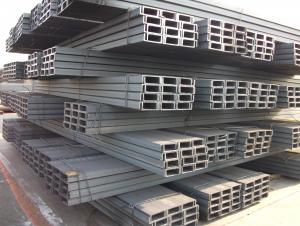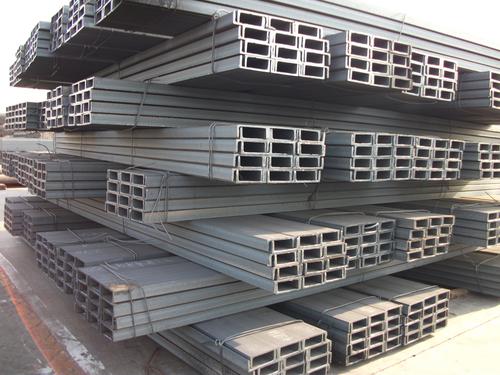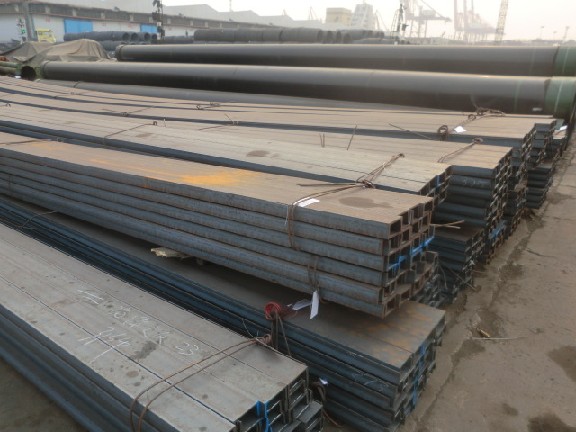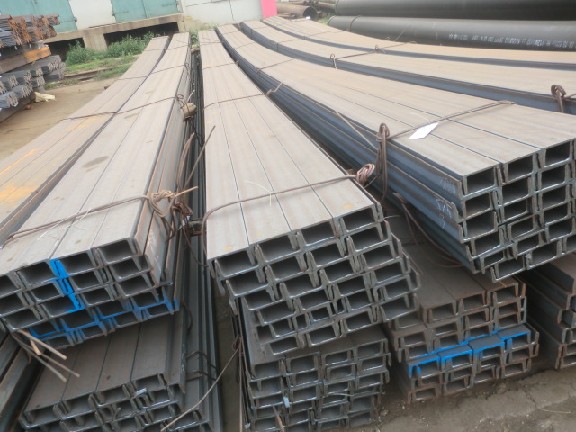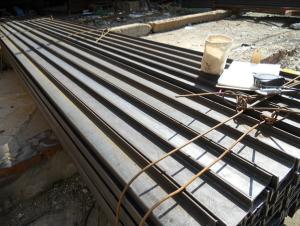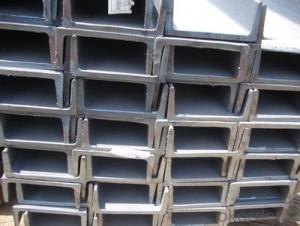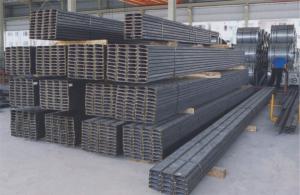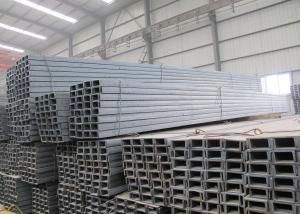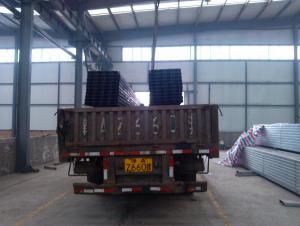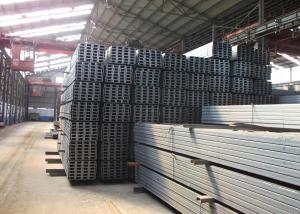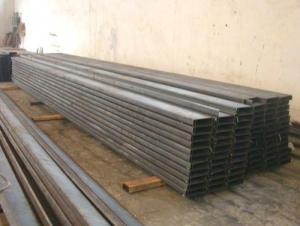upn
- Loading Port:
- China Main Port
- Payment Terms:
- TT OR LC
- Min Order Qty:
- -
- Supply Capability:
- -
OKorder Service Pledge
OKorder Financial Service
You Might Also Like
Product Description:
Specifications of UPN Channel Steel:
1.Our UPN Channel Steel has lots of advantages, just as followings:
a) At reasonable price and good quality.
b) To be convenient in construction and to save much time and labor.
c) The length of UPN can be manufactured according to customer’s requirements.
d) The UPN Channel Steel has strong mechanical strength.
e). The UPN Channel Steel possesses various kind of fittings, through which it is suitbal for many combinations.
f) Our UPN Channel Steel is attractive in appearance as well as beautiful in design
g) Free from slotted punching
2. The detailed sections of our UPN Channel Steel can be found in table-1
UPN U CHANNEL | Standard h | Sectional b | Dimension s | t | Mass: Kg/m |
| (mm) | (mm) | (mm) | (mm) |
|
80x45 | 80 | 45 | 6.0 | 8.0 | 8.64 |
100X50 | 100 | 50 | 6.0 | 8.5 | 10.6 |
120x55 | 120 | 55 | 7.0 | 9.0 | 13.4 |
140x60 | 140 | 50 | 7.0 | 10.0 | 16.0 |
160x65 | 160 | 65 | 7.5 | 10.0 | 18.8 |
180x70 | 180 | 70 | 8.0 | 11.0 | 22.0 |
Table-1
Note: we are definitely good at manufacturing and supplying UPN channel steel as per S235JR. Also, we are willing and able to provide our customers UPN channel steel in other sizes, which depends on customers’ concret requirements for the quantity.
3. The chemical composition of UPN Channel Steel as per S235JR is shown in the table-2
Alloy No | Element(%) | ||||
C | Mn | S | P | Si | |
S235JR | 0.12—0.20 | 0.3—0.7 | ≤0.030 | ≤0.030 | ≤0.20 |
Table-2
4. The mechanical property of UPN Channel Steel as per S235JR is shown in the table-3-1 and table-3-2
Alloy No | Yielding strength point( Mpa) | |||
Thickness (mm) | ||||
≤16 | >16--40 | >40--60 | >60--100 | |
≥ | ||||
S235JR | 235 | 225 | 215 | 195 |
Table-3-1
Alloy No | Tensile strength (Mpa) | Elongation after fracture(%) | |||
Thickness (mm) | |||||
| ≤16 | >16--40 | >40--60 | >60--100 | |
≥ | |||||
S235JR | 340--510 | 24 | 23 | 22 | 27 |
Table-3-2
Applications of UPN Channel Steel:
The UPN Channel Steel can be applied to construction of warehouses, workshops, sport stadiums and car parks etc.The hot rolled channel steel belongs to carbon structural steel which is applied to in the field of construction and machinery.In details, the hot rolled channel steel is usually used for arch-itechtural structure, and they could be welded in order to support or hang a vari-ety of facilities. They are also usually used in combination with I beam. Generally,the hot rolled channel steel we supply must possess perfect welding property, riveting property and mechanical property and so on.
- Q: Can steel channels be used for HVAC systems?
- Yes, steel channels can be used for HVAC systems. Steel channels provide structural support and are commonly used for ductwork, cable trays, and other components in HVAC systems due to their strength and durability.
- Q: What is the difference between channel steel and C steel?
- Channel steel is rail steel, relatively thick. C steel is rolled by iron plate
- Q: What kind of welding rod used for channel steel?
- Manual arc welding, the use of strength grades T50 electrode: knot 506, knot 507, knot 502, knot 503, knot 552, knot 553, etc.;
- Q: What do you mean by "A" in the channel type?
- The same waist height, according to its thickness is divided into a, B, B, C or a.A thin waist is the most.The width of their legs is equal to the waist thickness difference, that is, the real leg (not including waist thickness) is the same length, and the average leg thickness is the same.
- Q: Can steel channels be used for creating overhead support structures?
- Indeed, overhead support structures can be constructed using steel channels. In construction and engineering projects, steel channels are frequently employed due to their robustness and endurance. They offer exceptional support and enable the formation of beams, trusses, and frames for overhead structures like bridges, walkways, and canopies. With their remarkable load-bearing capabilities, steel channels can endure substantial weights and forces, rendering them ideal for the construction of dependable and enduring overhead support structures.
- Q: How about the moment of inertia of two back to back channels? There is no formula,,,,.
- This is not a specific formula, but generally in the mechanics of materials and engineering manual has a numerical physical quantity and the corresponding specific channel types, usually in combination just do a simple superposition or projections, specific to see you is the moment of inertia of the shaft on which. I hope it works for you
- Q: What are the typical applications of steel channels?
- Steel channels have various typical applications across multiple industries. They are commonly used in construction projects for framing, supporting structural loads, and creating framework for buildings, bridges, and infrastructure. Steel channels also find applications in manufacturing, where they are utilized as structural components in machinery, equipment, and vehicles. Additionally, they are frequently employed in the production of storage racks, shelving systems, and electrical enclosures. Overall, steel channels are versatile and widely used due to their strength, durability, and ability to provide structural support in a variety of applications.
- Q: Can steel channels be used in the construction of solar panel mounting structures?
- Yes, steel channels can be used in the construction of solar panel mounting structures. Steel channels provide strong support and stability, making them suitable for holding the weight of solar panels and withstanding various environmental conditions.
- Q: Installation of floor type distribution box, foundation channel production and installation, the quota should choose which two?
- Floor type distribution box installation cannot apply the distribution cabinet installation, and should set floor type of distribution box installation quota; installation set foundation channel steel foundation channel steel installation item.The foundation channel steel production: the foundation channel steel is not installed item containing material, quantity of steel plate, galvanized flat steel, round steel is installed base grounding of the auxiliary channel and. To calculate the foundation channel steel production, making composite iron production, the quantity of round bar, angle steel, flat steel can be unified to channel.
Send your message to us
upn
- Loading Port:
- China Main Port
- Payment Terms:
- TT OR LC
- Min Order Qty:
- -
- Supply Capability:
- -
OKorder Service Pledge
OKorder Financial Service
Similar products
Hot products
Hot Searches
Related keywords
